There is growing enthusiasm among major brands such as Coca-Cola, Warburtons and Heinz to launch joint marketing initiatives. Why is there a sudden surge of interest in cross-brand collaboration, and what ingredients contribute towards a successful partnership? Alex Beckett reports
As the three party leaders ponder the prospect of a hung parliament, the spirit of co-operation is already unfurling across the fmcg sector.
Some of Britain's biggest branded companies are busy collaborating on joint marketing initiatives and shared promotional mechanics testing the adage that together you can achieve more.
Twelve months ago, Warburtons teamed up with Heinz, Princes and Birds Eye Fish Fingers in a £20m on-pack promotion to encourage consumers to make their own lunch. In March, CCE joined forces with Diageo on a cross-merchandising, joint marketing campaign predicted to be worth £230m in sales by 2012.
A week later, CCE said it was looking to partner with food brands, having identified opportunities for joint meal deals and above-the-line marketing support. Andrex and Thorntons recently teamed up for an Easter competition and last week Dorset Cereals announced it was linking with four other local food and drink brands in a co-ordinated drive called Dorset Famous Five.
The industry seems to have been overtaken by a desire to co-operate. So why the sudden interest in getting hitched? And what makes for a successful brand marriage?
Category focus has, for many years, been considered a source of strength. But with supermarkets launching successful meal deals, including Dine in for £10, category focus is also a potential weakness. According to Richard Hayes, marketing director at Warburtons, the recession has forced companies to think deeply about how they market themselves in-store. "They realise they can achieve more together than individually," he says.
In what was Warburtons' first experience of working with other fmcg brands, the Save Tons on Lunch campaign last year enabled consumers to claim £20m-worth of money-off coupons and free products on Birds Eye Fish Fingers, Heinz Snap Pots and Princes canned products using codes printed on more than 100 million loaves.
"We worked at cross-category level with other companies to give consumers a better deal on using our products in their packed lunch," says Hayes. "It was the first time Warburtons had done anything like that and came from a desire to respond immediately to the recession."
The link-up proved sufficiently successful for Warburtons to repeat the initiative this year.
CCE and Diageo's Together for a Better Summer joint initiative was similarly designed to increase mutual sales, in this case spirits and mixers: merchandising CCE's Schweppes and Coca-Cola drinks alongside Diageo's Smirnoff, Gordon's and Pimm's, the push involved link-save deals and branded PoS highlighting popular spirit and mixer combinations to encourage consumers to buy the drinks together.
The £4m campaign, breaking this month, is funded 50/50 by the pair. But, says Diageo GB sales director David Smith, the motivation wasn't specifically linked to the recession.
"In our case it wasn't the economy that prompted the initiative, more the real desire to continue strong sales momentum in spirits." He cites Nielsen data showing sales increasing 6% [52w/e 20 March 2010].
There's clearly logic in marketing a bottle of Schweppes tonic with a bottle of Gordon's. "For us, it is a natural relationship that has been there all along," says Craig Smith, VP strategic marketing and planning at CCE.
The companies had previously worked together: the first offspring of Diageo and CCE's partnership was as early as 1995, with a pre-mix can of Gordon's gin and Schweppes tonic. Activity has continued in the on-trade. But the more complex nature of the partnership on Together for a Better Summer has required significant internal restructuring for the companies.
"We put together a team of reps from each company with strong sponsorship from senior people. They spend their lives understanding shoppers, poring over data and looking at demand at point of purchase, working collaboratively with customers," says Smith.
Despite the size of each company, CCE and Diageo say they were very open with each other, likening the partnership to a marriage. "These deals give companies cost efficiencies and you can achieve bigger presence in-store," explains Warburtons' Hayes. "Also, in our case we were spoken about outside the bakery aisle and in ambient for a change."
Andrew Collins, creative planning director at 1HQ brand agency, says brands will always have something the other wants, "be it access to consumers or advertising power around which they can agree a fair exchange".
Such partnerships have been a feature of retail relationships for a decade, he argues, but the dynamics had "lost some resonance" as consumers came to believe the relationships were 'paid for' deals rather than true alliances. "Consumers will only trust the collaboration if they trust the brands individually," he says.
And Smith also warns that businesses should not underestimate the damage a "poor brand fit" could have on a joint initiative.
The dynamics must be clearly established from early on, says Hayes. All too easily the venture can degenerate into a 'too many cooks' situation. "You need a lead partner who manages final delivery and the others to be stakeholders who deliver the look and feel of the activity," he suggests.
Getting the retailers on side is another keystone of a successful collaboration. The CCE and Diageo joint initiative was borne from the companies' realisation that shoppers who purchase spirits and mixers together have a higher overall basket spend and value to the retailer.
It was crucial to avoid a one-size-fits-all approach with the supermarkets, says David Smith. CCE and Diageo, he explains, worked closely with retailers to create "tailor-made solutions" for each. "Retailers are the third party yet the most important party," he says.
Retailers can also attract added investment from the brands from joint advertising and in-store promotional activity, adds Collins.
Behind-the-scenes mechanics are equally essential if collaborations are to succeed. If any company fails to deliver on its promises, all those involved can expect to suffer. When a promotion involves SKUs from up to five different brands, as with Warburtons' Save Tons on Lunch, availability is critical, says Hayes.
"You must be clear that availability is strong among partner brands," he says. "With Heinz and Müller we wanted to be sure their products were available and ready for distribution. If only a part of the collaborative offer isn't on-shelf, it all breaks down."
Adopting a synergistic approach has plenty of other pitfalls. One danger is that one party doesn't put the same emphasis into the partnership as the other. "You have to be prepared to invest," says Hayes. "If one party looks at it as just a means of saving money, it would not work. It's all about generating growth ."
Craig Smith agrees that focusing on growing the category should be the prime goal for brand owners. "If it is done purely for commercial purposes and not where natural relationships or strong opportunities lie, it might result in shorter-term successes," he says.
Hayes says that another key learning from Save Tons, and a potential barrier to collaboration, was how it required each company to have access to one another's sensitive information.
"Companies have databases of which types of consumer buy their brand, but big, established brands are already in most retailers, so collaborations are more about getting new databases of consumers from partner brands. You always gain from that," he says.
Smaller brands also have much to gain from cross-collaboration. "If your brand is in relatively low distribution and you work with a big brand that has 99% distribution, you will be happy to let them ride off the back of that," says Hayes.
David Smith points to Diageo's co-branding agreement with sausage specialist Debbie & Andrew's as an example of how a company of a global scale can work in partnership with a smaller supplier. In December 2008 the two manufacturers struck an agreement to develop a range of meat products that contained Guinness. "The partner doesn't have to always be a multinational. Driving sales in the relevant category is the main point," he says.
"If the category growth opportunity is right, and the synergy makes sense, this could be an interesting trend for smaller brands to explore," agrees Craig Smith.
And proof that smaller companies are recognising the opportunities presented by brand collaborations arrived last week when Dorset Cereals teamed up with Fairtrade brand Clipper Teas, Denhay Farm, brewer Hall & Woodhouse and Olives Et Al to create the Dorset Famous Five.
"Initially, we knew that the brands would work well together in hampers, goodie bags at events, for competition prizes and at food festivals and shows, but we also recognised there were significant commercial opportunities," says co-founder Joanne Myram.
"The plan is that we will develop our commercial activities beyond raising awareness of the five brands to include joint sales initiatives, tastings and samplings, voucher delivery, a Dorset Famous Five hamper and other combined sales activities. We see the Dorset Famous Five working across all types of retail and food service opportunities."
In-store activation isn't the only path for collaborators, points out Irwin Lee, Procter & Gamble UK and Ireland chief. The household goods giant launched an online parenting magazine called Super Savvy Me seven months ago. The food and lifestyle website targets mums and is peppered with adverts, links and downloadable coupons for P&G's vast array of brands.
Lee sees the site as a different form of multi-brand collaboration and says he hopes other family-oriented companies will want to be featured on the site, citing the Disney franchise as an example.
But Lee admits the joint marketing initiatives and shared promotional mechanics that feature in-store have caught his eye. "We are having some discussions with other companies about collaborations, but it is hard to find non-competing brands in the household category. I can understand why it's happening in food and drink as it's a much broader playing field."
The fact that a global powerhouse such as P&G has opened its mind to the idea of cross-brand collaboration supports the fact that this a trend with serious potential to become a game-changer in terms of marketing and in-store promotional activity in the future.
With Britain teetering on the brink of having its first co-op government for a generation, maybe now is the time for more companies to see whether they can achieve more by working together.
Getting hitched
Coca-Cola, Diageo (2010)
Cost: £4m
Results: "This game-changing partnership could create £230m retail sales value in two years."
Rating: Four hearts out of five
Warburtons, Heinz, Birds Eye (2009)
Cost: £20m
Results: "It is a direct response to the recession and marks Warburtons' first collaboration with other food brands."
Rating: Three
Andrex, Thorntons (2010)
Cost: (undisclosed)
Results: "We linked with Thorntons as it's another premium, family brand like Andrex. It was a great success." Rating: Two star
Guinness, Debbie & Andrew's (2008)
Cost: £300,000
Results: "Guinness didn't want to be seen as brand-slapping. It wanted to work with a real foodie company." Rating: Two star
Great little ideas?
With iconic names like Branston and Mr Kipling under its banner, Premier Foods had the means to launch its own multi-brand initiative last month.
Great Little Ideas aims to boost the revenue of 16 of Premier's ambient brands to £1bn this year. Backed by a £10m ad spend, packaging carries a yellow star logo to alert mums to pack and online hints on using the SKUs together in exciting ways.
As the three party leaders ponder the prospect of a hung parliament, the spirit of co-operation is already unfurling across the fmcg sector.
Some of Britain's biggest branded companies are busy collaborating on joint marketing initiatives and shared promotional mechanics testing the adage that together you can achieve more.
Twelve months ago, Warburtons teamed up with Heinz, Princes and Birds Eye Fish Fingers in a £20m on-pack promotion to encourage consumers to make their own lunch. In March, CCE joined forces with Diageo on a cross-merchandising, joint marketing campaign predicted to be worth £230m in sales by 2012.
A week later, CCE said it was looking to partner with food brands, having identified opportunities for joint meal deals and above-the-line marketing support. Andrex and Thorntons recently teamed up for an Easter competition and last week Dorset Cereals announced it was linking with four other local food and drink brands in a co-ordinated drive called Dorset Famous Five.
The industry seems to have been overtaken by a desire to co-operate. So why the sudden interest in getting hitched? And what makes for a successful brand marriage?
Category focus has, for many years, been considered a source of strength. But with supermarkets launching successful meal deals, including Dine in for £10, category focus is also a potential weakness. According to Richard Hayes, marketing director at Warburtons, the recession has forced companies to think deeply about how they market themselves in-store. "They realise they can achieve more together than individually," he says.
In what was Warburtons' first experience of working with other fmcg brands, the Save Tons on Lunch campaign last year enabled consumers to claim £20m-worth of money-off coupons and free products on Birds Eye Fish Fingers, Heinz Snap Pots and Princes canned products using codes printed on more than 100 million loaves.
"We worked at cross-category level with other companies to give consumers a better deal on using our products in their packed lunch," says Hayes. "It was the first time Warburtons had done anything like that and came from a desire to respond immediately to the recession."
The link-up proved sufficiently successful for Warburtons to repeat the initiative this year.
CCE and Diageo's Together for a Better Summer joint initiative was similarly designed to increase mutual sales, in this case spirits and mixers: merchandising CCE's Schweppes and Coca-Cola drinks alongside Diageo's Smirnoff, Gordon's and Pimm's, the push involved link-save deals and branded PoS highlighting popular spirit and mixer combinations to encourage consumers to buy the drinks together.
The £4m campaign, breaking this month, is funded 50/50 by the pair. But, says Diageo GB sales director David Smith, the motivation wasn't specifically linked to the recession.
"In our case it wasn't the economy that prompted the initiative, more the real desire to continue strong sales momentum in spirits." He cites Nielsen data showing sales increasing 6% [52w/e 20 March 2010].
There's clearly logic in marketing a bottle of Schweppes tonic with a bottle of Gordon's. "For us, it is a natural relationship that has been there all along," says Craig Smith, VP strategic marketing and planning at CCE.
The companies had previously worked together: the first offspring of Diageo and CCE's partnership was as early as 1995, with a pre-mix can of Gordon's gin and Schweppes tonic. Activity has continued in the on-trade. But the more complex nature of the partnership on Together for a Better Summer has required significant internal restructuring for the companies.
"We put together a team of reps from each company with strong sponsorship from senior people. They spend their lives understanding shoppers, poring over data and looking at demand at point of purchase, working collaboratively with customers," says Smith.
Despite the size of each company, CCE and Diageo say they were very open with each other, likening the partnership to a marriage. "These deals give companies cost efficiencies and you can achieve bigger presence in-store," explains Warburtons' Hayes. "Also, in our case we were spoken about outside the bakery aisle and in ambient for a change."
Andrew Collins, creative planning director at 1HQ brand agency, says brands will always have something the other wants, "be it access to consumers or advertising power around which they can agree a fair exchange".
Such partnerships have been a feature of retail relationships for a decade, he argues, but the dynamics had "lost some resonance" as consumers came to believe the relationships were 'paid for' deals rather than true alliances. "Consumers will only trust the collaboration if they trust the brands individually," he says.
And Smith also warns that businesses should not underestimate the damage a "poor brand fit" could have on a joint initiative.
The dynamics must be clearly established from early on, says Hayes. All too easily the venture can degenerate into a 'too many cooks' situation. "You need a lead partner who manages final delivery and the others to be stakeholders who deliver the look and feel of the activity," he suggests.
Getting the retailers on side is another keystone of a successful collaboration. The CCE and Diageo joint initiative was borne from the companies' realisation that shoppers who purchase spirits and mixers together have a higher overall basket spend and value to the retailer.
It was crucial to avoid a one-size-fits-all approach with the supermarkets, says David Smith. CCE and Diageo, he explains, worked closely with retailers to create "tailor-made solutions" for each. "Retailers are the third party yet the most important party," he says.
Retailers can also attract added investment from the brands from joint advertising and in-store promotional activity, adds Collins.
Behind-the-scenes mechanics are equally essential if collaborations are to succeed. If any company fails to deliver on its promises, all those involved can expect to suffer. When a promotion involves SKUs from up to five different brands, as with Warburtons' Save Tons on Lunch, availability is critical, says Hayes.
"You must be clear that availability is strong among partner brands," he says. "With Heinz and Müller we wanted to be sure their products were available and ready for distribution. If only a part of the collaborative offer isn't on-shelf, it all breaks down."
Adopting a synergistic approach has plenty of other pitfalls. One danger is that one party doesn't put the same emphasis into the partnership as the other. "You have to be prepared to invest," says Hayes. "If one party looks at it as just a means of saving money, it would not work. It's all about generating growth ."
Craig Smith agrees that focusing on growing the category should be the prime goal for brand owners. "If it is done purely for commercial purposes and not where natural relationships or strong opportunities lie, it might result in shorter-term successes," he says.
Hayes says that another key learning from Save Tons, and a potential barrier to collaboration, was how it required each company to have access to one another's sensitive information.
"Companies have databases of which types of consumer buy their brand, but big, established brands are already in most retailers, so collaborations are more about getting new databases of consumers from partner brands. You always gain from that," he says.
Smaller brands also have much to gain from cross-collaboration. "If your brand is in relatively low distribution and you work with a big brand that has 99% distribution, you will be happy to let them ride off the back of that," says Hayes.
David Smith points to Diageo's co-branding agreement with sausage specialist Debbie & Andrew's as an example of how a company of a global scale can work in partnership with a smaller supplier. In December 2008 the two manufacturers struck an agreement to develop a range of meat products that contained Guinness. "The partner doesn't have to always be a multinational. Driving sales in the relevant category is the main point," he says.
"If the category growth opportunity is right, and the synergy makes sense, this could be an interesting trend for smaller brands to explore," agrees Craig Smith.
And proof that smaller companies are recognising the opportunities presented by brand collaborations arrived last week when Dorset Cereals teamed up with Fairtrade brand Clipper Teas, Denhay Farm, brewer Hall & Woodhouse and Olives Et Al to create the Dorset Famous Five.
"Initially, we knew that the brands would work well together in hampers, goodie bags at events, for competition prizes and at food festivals and shows, but we also recognised there were significant commercial opportunities," says co-founder Joanne Myram.
"The plan is that we will develop our commercial activities beyond raising awareness of the five brands to include joint sales initiatives, tastings and samplings, voucher delivery, a Dorset Famous Five hamper and other combined sales activities. We see the Dorset Famous Five working across all types of retail and food service opportunities."
In-store activation isn't the only path for collaborators, points out Irwin Lee, Procter & Gamble UK and Ireland chief. The household goods giant launched an online parenting magazine called Super Savvy Me seven months ago. The food and lifestyle website targets mums and is peppered with adverts, links and downloadable coupons for P&G's vast array of brands.
Lee sees the site as a different form of multi-brand collaboration and says he hopes other family-oriented companies will want to be featured on the site, citing the Disney franchise as an example.
But Lee admits the joint marketing initiatives and shared promotional mechanics that feature in-store have caught his eye. "We are having some discussions with other companies about collaborations, but it is hard to find non-competing brands in the household category. I can understand why it's happening in food and drink as it's a much broader playing field."
The fact that a global powerhouse such as P&G has opened its mind to the idea of cross-brand collaboration supports the fact that this a trend with serious potential to become a game-changer in terms of marketing and in-store promotional activity in the future.
With Britain teetering on the brink of having its first co-op government for a generation, maybe now is the time for more companies to see whether they can achieve more by working together.
Getting hitched
Coca-Cola, Diageo (2010)
Cost: £4m
Results: "This game-changing partnership could create £230m retail sales value in two years."
Rating: Four hearts out of five
Warburtons, Heinz, Birds Eye (2009)
Cost: £20m
Results: "It is a direct response to the recession and marks Warburtons' first collaboration with other food brands."
Rating: Three
Andrex, Thorntons (2010)
Cost: (undisclosed)
Results: "We linked with Thorntons as it's another premium, family brand like Andrex. It was a great success." Rating: Two star
Guinness, Debbie & Andrew's (2008)
Cost: £300,000
Results: "Guinness didn't want to be seen as brand-slapping. It wanted to work with a real foodie company." Rating: Two star
Great little ideas?
With iconic names like Branston and Mr Kipling under its banner, Premier Foods had the means to launch its own multi-brand initiative last month.
Great Little Ideas aims to boost the revenue of 16 of Premier's ambient brands to £1bn this year. Backed by a £10m ad spend, packaging carries a yellow star logo to alert mums to pack and online hints on using the SKUs together in exciting ways.









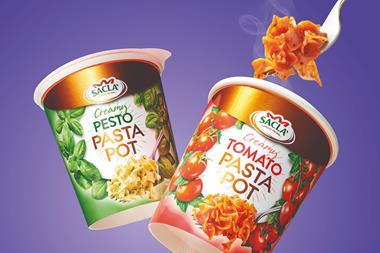
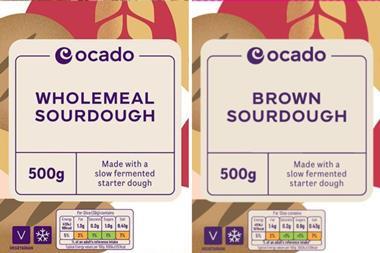

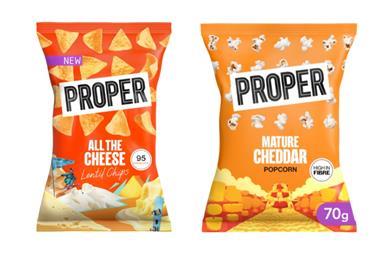

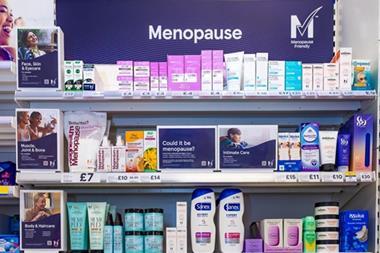
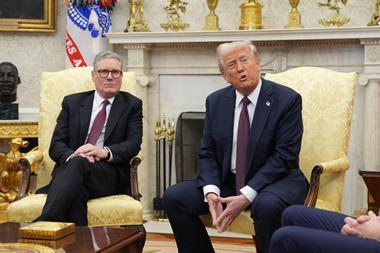
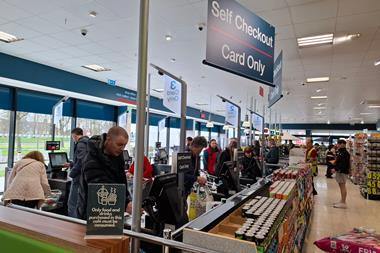
No comments yet